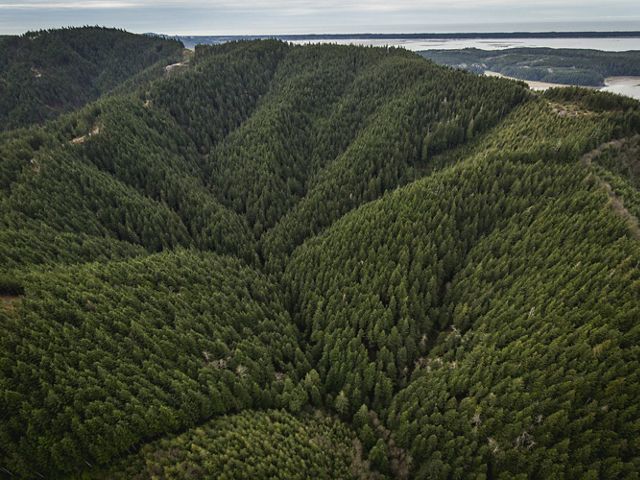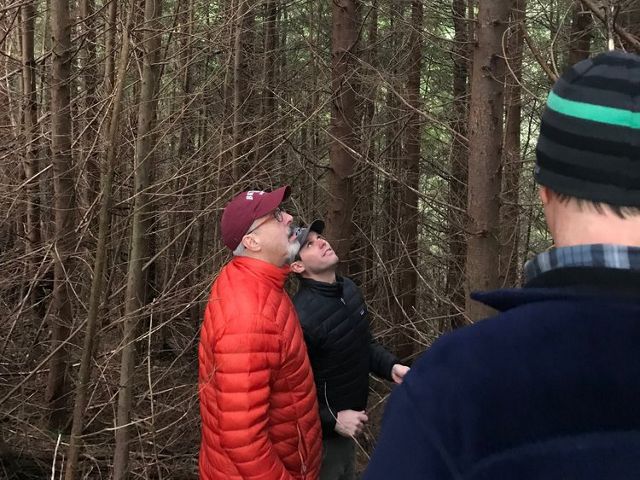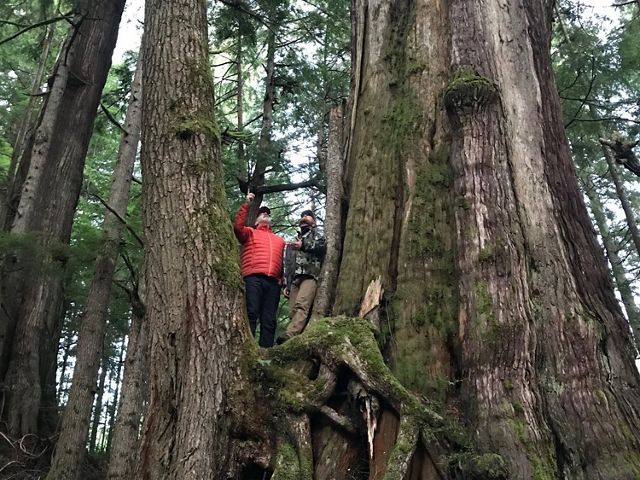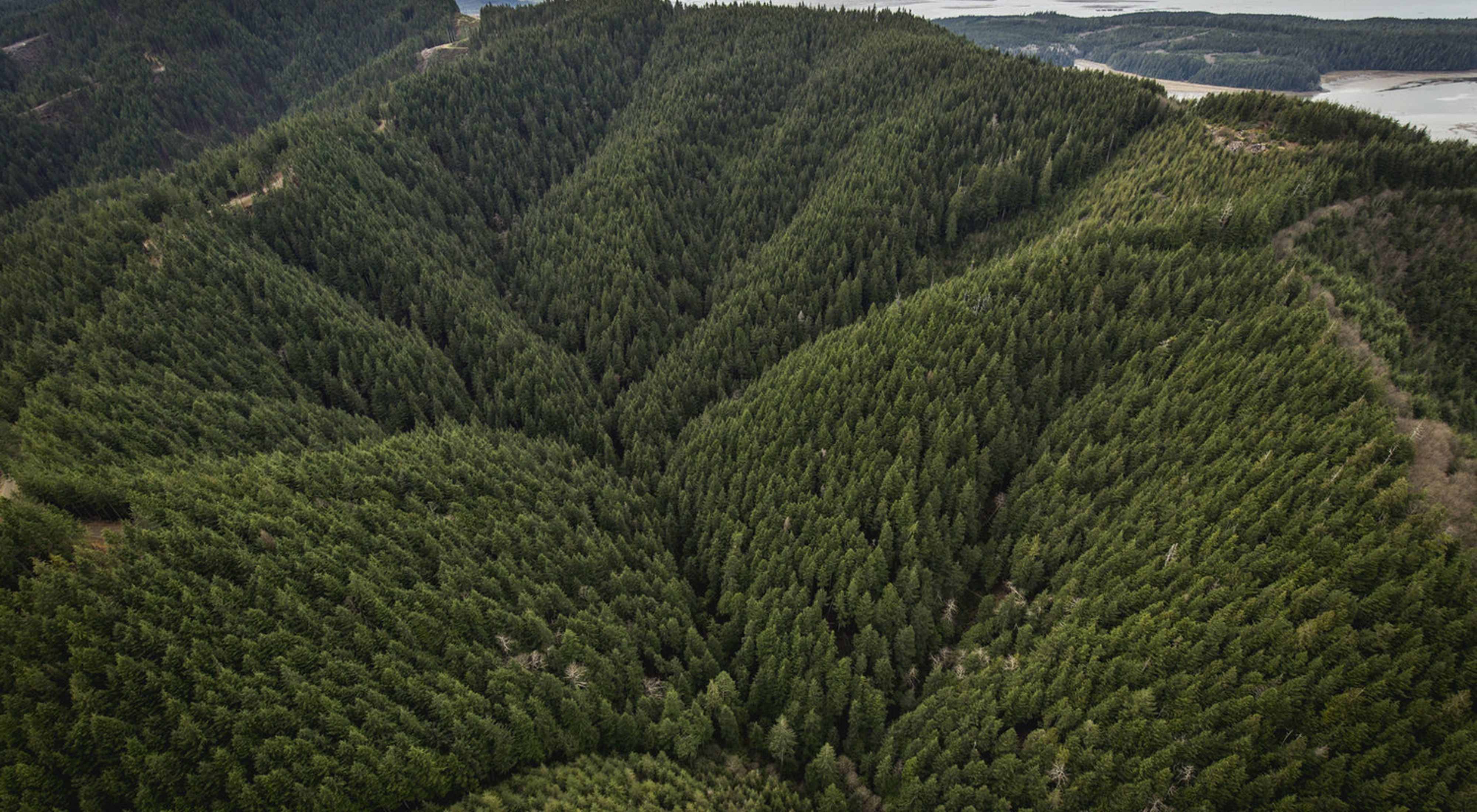Forest Restoration Climate Change Resilience
Story and photos by Michael Case, Forest Ecologist for The Nature Conservancy’s Washington Chapter
It was an amazingly sunny day when I stepped out of the truck to meet our chapter’s Lead Scientist Phil Levin, Director of Land Conservation David Rolph and Forest Manager Kyle Smith at Ellsworth Creek Preserve. It was December 21st – the winter solstice – the shortest and usually one of the wettest days of the year. We had gotten lucky with the weather and were energized to see Ellsworth and brainstorm science ideas.

Nearly 8,000 acres in size, the Ellsworth Preserve protects an entire watershed in the southwest corner of Washington above Willapa Bay from habitat fragmentation and industrial logging, two very real threats in the region.
It’s probably no surprise that much of Western Washington has been clear cut multiple times over the last two centuries. This pattern has resulted in vast areas of even-aged trees dominated by a low diversity of tree species. Consequently, many of these forests are less able to cope with disturbances, such as fire, insects, and diseases. Compounding the problem, climate change may further exacerbate these threats by stressing trees with hotter temperatures and changing rain patterns.
Fortunately, there’s a solution.
Ellsworth Creek Preserve offers a number of unique science and preservation opportunities. For instance, we are exploring options for restoring forests and streams from the headwaters to the estuary. This evidence-based information will then inform us on how best to speed up forest development and create the old-growth characteristics needed to buffer disturbances. Our work at Ellsworth will also serve as a model for a region-wide effort to demonstrate how we can help improve the natural resilience of these systems from threats like climate change.

But before we can tout our potential achievements, we need to measure them.
Our first stop was at a forest stand we call a control. This stand has not been restored and serves as an example of what happens after an area is clear cut and no active forest management happens. As demonstrated by the photo to the right, these areas are overly dense with small trees and devoid of an understory. Unfortunately, these trees are also very unhealthy as they compete with one another for limited resources and light.
Our second stop was to a forest stand that was restored 10 years ago by selectively thinning trees. This stand is more open, has lots of structure, a diverse understory, and is more naturally resilient to disturbances, like insects, diseases and climate change.

Using cutting-edge science, such as light detection and ranging (LiDAR) and environmental DNA (eDNA) we will quantify the effect that restoration treatments have had on forest structure, biomass, carbon, and biodiversity by comparing the managed stands to the control stands.
However, forests are just half of the story.
After an invigorating press pot of coffee on the truck tailgate, we headed over to several stream restoration sites. At these locations, our team has placed fallen trees into streams thereby creating a more natural structure of log jams. Over time, log jams increase natural scour, create new pools and deepen existing ones, provide slow-water refuge for young salmon, create gravel beds for nesting, trap nutrients in streams, and increase food availability. We will compare stream hydrology, structure, and biodiversity in these treated streams to streams that have not yet been restored.
Lastly, we made a stop at one of the few remaining old-growth stands in the area and gave our respect to these ancient living organisms.

Ellsworth Creek Preserve is a unique and biologically rich watershed and we are continually humbled by its importance in the region. By leveraging evidence-based science we will not only inform future management practices at Ellsworth, but also guide how we help build the resilience of natural systems throughout the region so that they can persist into the future.
